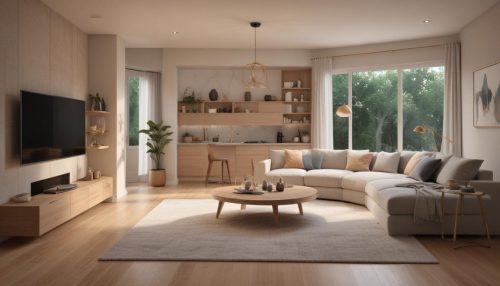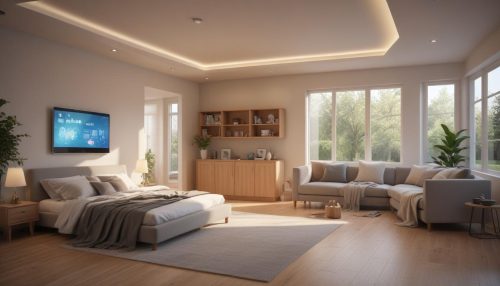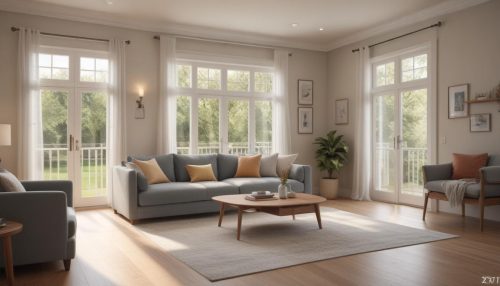How to Create an Efficient Home Organization System
August 11, 2025
A well-organized home can have a profound impact on your mental well-being, productivity, and overall sense of calm. However, creating an efficient home organization system requires planning, time, and consistency. By implementing the right strategies, you can streamline your living space, reduce clutter, and make everyday tasks more manageable. In this article, we’ll explore how to create an efficient home organization system that enhances your lifestyle and keeps your home tidy and functional.

Why Home Organization Matters
Home organization goes beyond just tidying up. An organized home allows you to find what you need quickly, reduces stress, and enhances productivity. When your living space is in order, you can focus on what matters most—whether it’s spending time with family, pursuing personal interests, or simply relaxing.
- Increased Efficiency: An organized home saves you time by eliminating unnecessary searching for items and reducing decision fatigue.
- Reduced Stress: A clutter-free space promotes mental clarity and helps you feel more relaxed and in control of your environment.
- Improved Productivity: With everything in its place, you can work more efficiently, whether you’re handling household chores or managing a home office.
For more on the benefits of home organization, see Psychology Today’s article on Decluttering and Mental Health.
Steps to Create an Efficient Home Organization System
Creating an efficient home organization system doesn’t have to be complicated. By breaking it down into manageable steps, you can transform your space and enjoy the benefits of a well-ordered home. Here are the essential steps to help you get started:
1. Assess Your Space and Identify Needs
The first step to creating an efficient home organization system is understanding your space and the areas that need the most attention. Take a walk through your home and assess the level of clutter and disorganization in different rooms.
- Focus on High-Traffic Areas: Rooms such as the kitchen, living room, and entryway tend to accumulate the most clutter. Start organizing these areas first.
- Consider Functionality: Think about how each space is used and how it can function better. Are there areas that could benefit from better storage options? Are items in the wrong place?
For more on assessing your space, see Forbes’ article on Home Organization Strategies.
2. Declutter First
Before you start organizing, you need to declutter your space. Eliminate items you no longer need, use, or love. This will make it easier to create an efficient system for the items that remain.
- Sort Items by Category: Go through your belongings and sort them into categories such as “keep,” “donate,” and “discard.” Be ruthless in removing things that no longer serve a purpose.
- Tackle One Area at a Time: Focus on one area or room at a time to prevent feeling overwhelmed. Start with small spaces like a closet or a drawer before tackling larger areas.
For more tips on decluttering, check out The Spruce’s article on Decluttering Your Home.
3. Implement Storage Solutions
Once you’ve decluttered, it’s time to implement storage solutions that fit your needs. The goal is to maximize available space while keeping items accessible and organized.
- Use Vertical Space: Install shelves, hooks, or pegboards to utilize wall space for storage. This helps free up floor space and keeps items organized.
- Storage Bins and Baskets: Invest in bins, baskets, or storage containers to group similar items together. Label containers for easy identification.
- Use Multi-Functional Furniture: Choose furniture that doubles as storage, such as ottomans with hidden compartments or coffee tables with drawers.
For more on creating storage solutions, read Good Housekeeping’s guide to Home Storage Ideas.
4. Establish Organizational Systems for Each Room
Each room in your home serves a different function, so your organization system should cater to the specific needs of each space. Here’s how to establish effective systems in various rooms:
- Kitchen: Use drawer dividers for utensils, install pull-out shelves for easy access to pots and pans, and label pantry shelves.
- Living Room: Use baskets or bins for remote controls, blankets, and magazines. Keep the TV area clutter-free with a media console that has built-in storage.
- Home Office: Invest in filing cabinets for documents, use cable management systems to keep cords organized, and implement a task board for reminders and deadlines.
For more tips on organizing specific rooms, check out The Home Edit’s guide on Room-by-Room Organization.
5. Develop a Routine for Maintenance
An organized home requires regular maintenance to stay clutter-free. Create a daily or weekly routine for tidying up and putting things back in their designated places.
- Daily Quick Clean-Ups: Set aside 10-15 minutes each day to tidy up high-traffic areas. This prevents clutter from building up over time.
- Weekly Organizing Sessions: Spend 30-60 minutes once a week maintaining your organization system. This can include reorganizing shelves, filing papers, and checking storage bins.
For more on maintaining organization, see MindTools’ article on Effective Routines.
6. Involve the Whole Family or Household
If you live with others, it’s important to involve everyone in the organization process. When everyone is on the same page, maintaining a clutter-free home becomes easier.
- Create Shared Systems: Develop shared storage solutions for communal items, like shoes, coats, and bags, so everyone has a designated space.
- Delegate Tasks: Assign age-appropriate tasks to children or family members to ensure that tidying up becomes a team effort.
For more on organizing with family, check out Parents’ guide on Organizing Your Home as a Family.
Conclusion: Create a Functional and Efficient Home Organization System
Creating an efficient home organization system can greatly improve your daily life by reducing stress, increasing productivity, and enhancing the overall functionality of your space. By decluttering, implementing effective storage solutions, and establishing organizational systems tailored to each room, you can create a home that’s both organized and functional. Start small, stay consistent, and enjoy the benefits of a well-organized, stress-free home.
References:
- Forbes. (2020). Home Organization Strategies to Improve Your Productivity. Retrieved from https://www.forbes.com/sites/forbeshumanresourcescouncil/2020/07/30/10-home-organization-strategies-to-improve-your-productivity/
- The Spruce. (2021). Decluttering Your Home: Step-by-Step Guide. Retrieved from https://www.thespruce.com/decluttering-home-organization-2641454
- Good Housekeeping. (2021). Home Storage Ideas. Retrieved from https://www.goodhousekeeping.com/home/organizing/
- MindTools. (2021). Effective Routines for Organization and Time Management. Retrieved from https://www.mindtools.com/pages/article/newHTE_90.htm





